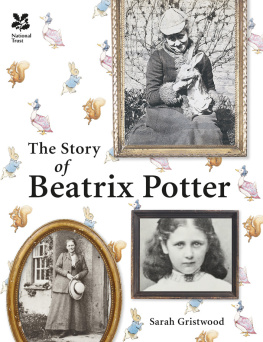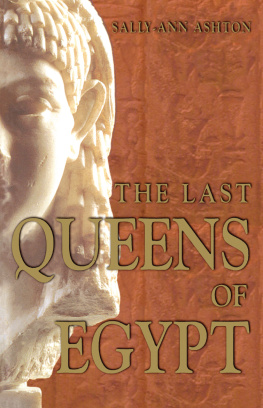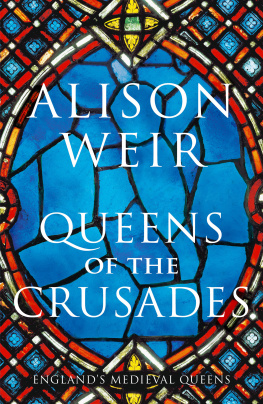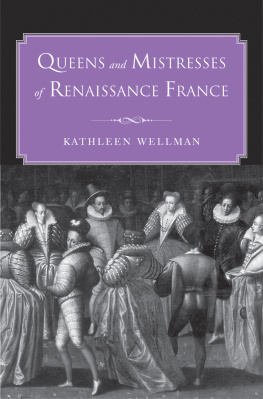
As religion divided sixteenth-century Europe, an extraordinary group of women queens, consorts and thinkers rose to power. Despite finding themselves on opposing sides of power struggles both armed and otherwise, through family ties and patronage they educated and supported each other in a brutal world where the price of failure was disgrace, exile or even death. Theirs was a unique culture of feminine power that saw them run the continent for decades. And yet, as the sixteenth century waned the Virgin Queen of England found herself virtually alone as a ruler a queen surrounded by kings once more.
From mother to daughter and mentor to protge, Sarah Gristwood follows the passage of power from Isabella of Castile and Anne de Beaujeu through Anne Boleyn the woman who tipped England into religious reform and on to Elizabeth I and Jeanne dAlbret, heroine of the Protestant Reformation. Unravelling a gripping historical narrative, she reveals the unorthodox practices adopted by these women in the face of challenges that retain an all-too familiar aspect today, and assesses their impact on the era that began the shaping of the modern world. Epic in scale, this game of queens is a remarkable spectacle of skill and ingenuity.
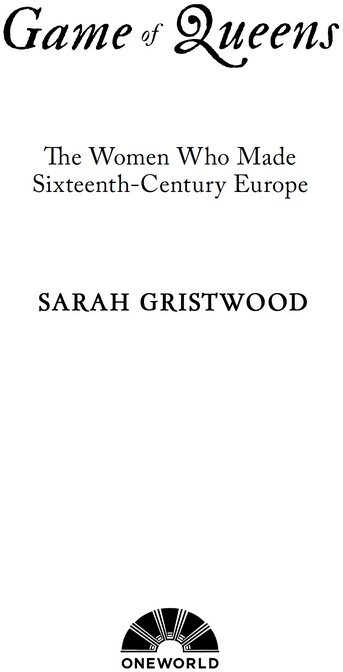
For my eldest niece, Emily West
Contents
Illustration Credits
Game of Chess , 1555, Anguissola, Sofonisba (c.15321625): Museum Narodowe, Poznan, Poland/Bridgeman Images.
Isabella of Castile, Ms 604/1339 f.64v King Ferdinand II of Aragon and Isabella of Castile, from the Devotionary of Queen Juana the Mad, c.1482 (vellum): Musee Conde, Chantilly, France/Bridgeman Images.
Anne de Beaujeu, detail of the right leaf of the Triptych of the Virgin in glory, 14981499, by Jean Hey or Hay (ca.1475ca.1505), known as the Master of Moulins, sacristy of the church of Notre-Dame in Moulins, France: DeAgostini/Getty Images.
The Field of the Cloth of Gold : Wikimedia Commons.
Margaret of Austria, c.1490 (oil on oak panel), Master of Moulins (Jean Hey), (fl.c.1483c.1529): Metropolitan Museum of Art, New York, USA/Bridgeman Images.
Manuscript miniature showing french queen Louise of Savoy: PVDE/Bridgeman Images.
Marguerite of Navarre, c.1527, by Jean Clouet (c.14851541), found in the collection of Walker Art Gallery: Fine Art Images/Heritage Images/Getty Images.
Margaret Tudor: Sir Francis Ogilvy/The National Library of Scotland.
Anne Boleyn, 1534 (oil on panel), English School: Hever Castle, Kent, UK/Bridgeman Images.
Katherine of Aragon: Universal History Archive/Getty Images.
Elizabeth I when a Princess, c.1546, attributed to William Scrots (153753): Royal Collection Trust/ Her Majesty Queen Elizabeth II 2016.
Queen Mary I (151658) 1554 (oil on panel), Mor, Anthonis van Dashorst (Antonio Moro) (c.15191576/77): Prado, Madrid, Spain/Bridgeman Images.
An Allegory of Tudor Succession: The Family of Henry VIII : Wikimedia Commons.
Mary of Guise (15151560), 1537, found in the collection of the National Gallery of Scotland, Edinburgh: Fine Art Images/Heritage Images/Getty Images.
Mary of Austria (a.k.a. Mary of Hungary), c.1520 (oil on vellum on panel), Maler, Hans or Johan (fl.15101523): Society of Antiquaries of London, UK/Bridgeman Images.
Margaret of Parma: Stedelijk Museum Het Prinsenhof, Delft, Netherlands/Lessing Images.
Jeanne dAlbret: Peter Horree/Alamy Stock Photo.
Catherine de Medici (151989) (oil on panel), French School: Musee Conde, Chantilly, France/Bridgeman Images.
Franois Dubois (15291584) St. Bartholomews Night, August 24, 1572: DEA/G. DAGLI ORTI/De Agostini/Getty Images.
Elizabeth I: His Grace the Duke of Bedford and the Trustees of the Bedford Estates, from the Woburn Abbey Collection.
Portrait of Mary Queen of Scots by Franois Clouet (15101572): World History Archive/Alamy Stock Photo.
Game of Queens: Whos Who
Spain and the Habsburg Empire
Isabella of Castile (14511504)
Queen Regnant of Castile from 1474, Isabellas marriage to Ferdinand II of Aragon (14521516) united the two main Spanish kingdoms. They famously ruled together as the mighty Catholic monarchs, producing only a short-lived son but several influential daughters. On Isabellas death Castile was inherited by their eldest surviving daughter, Juana the Mad (14791555), but Ferdinand proved reluctant to lose his power in that kingdom.
Maximilian I, Holy Roman Emperor (14591519)
After his marriage to Mary of Burgundy (14571482), ruling duchess of what would later be known as the Netherlands, Maximilians ambition was to unite as much of Europe as possible under the hands of his Habsburg family. The marriage of his son Philip of Burgundy (14781506) to Ferdinand and Isabellas daughter Juana produced (among other children) the future Charles V.
Margaret of Austria (14801530)
Maximilian and Mary of Burgundy also had a daughter, Margaret. Contracted to the young French king Charles VIII, she was sent as a toddler to be raised in that country. When that alliance collapsed she married Isabella and Ferdinands son and heir Juan and then, after his early death, the Duke of Savoy. But when he too died she returned to the Netherlands, which she ruled as regent for many years on behalf of her nephew Charles; the twelve-year-old Anne Boleyn was one of her maids.
Charles V (15001558)
Charles inherited the Austrian lands of his paternal grandfather Maximilian, as well as the elective title of Holy Roman Emperor, which Maximilian also held, the Burgundian inheritance of his father Philip (the Netherlands), the Castile of his mother Juana and the Aragon of his maternal grandfather Ferdinand, to say nothing of lands in the New World. He found the inheritance personally wearing and ultimately ceded the Austrian lands, power in Eastern Europe and eventually leadership of the Holy Roman Empire to his younger brother Ferdinand (15031564). This concentration of territories into the hands of one family established the Habsburg dominance of the sixteenth century.
Mary of Hungary (15051558)
Another sibling of Charles V and Ferdinand, Mary was married to the King of Hungary until the Battle of Jarnac made her a youthful widow. She then held Habsburg power on Ferdinands behalf against the advance of the Ottoman Turks. The niece of Margaret of Austria, who brought her up, she then became Margarets successor as Regent of the Netherlands. Marys three sisters all became queens consort: Eleanor (14981558) first of Portugal, then of France, Isabella (15011526) of Denmark, Norway and Sweden and Catherine (Catalina, 15071578) of Portugal, which she later ruled as regent.
Christina of Denmark (15211590)
Daughter of Isabella and her husband King Christian of Denmark, after her father was deposed Christina was raised by Isabellas aunt Margaret of Austria and sister Mary of Hungary. Married first to the Duke of Milan and then the Duke of Lorraine, she was considered as a possible bride for Henry VIII of England. She was a determined player on the European political scene, attempting to regain her fathers Scandinavian kingdoms, and a key negotiator of the important Peace of Cateau-Cambrsis.
Margaret of Parma (15221586)
The illegitimate daughter of Charles V, Margaret was also raised by Mary of Hungary, whom she in turn succeeded in 1555 as Regent of the Netherlands, ruling on behalf of her half-brother Philip of Spain. Her son Alexander Farnese, Duke of Parma, was Philips great general.
Philip II (15271598)
Philip of Spain was also hereditary ruler of the Netherlands, as well as the increasingly important New World territories. Early in his life, his marriage to Mary Tudor made him King Consort of England; late in it, he inherited Portugal, through his mother. He is of course famous, or infamous, for the Armada he sent against Elizabeth of England in 1588.
Next page

